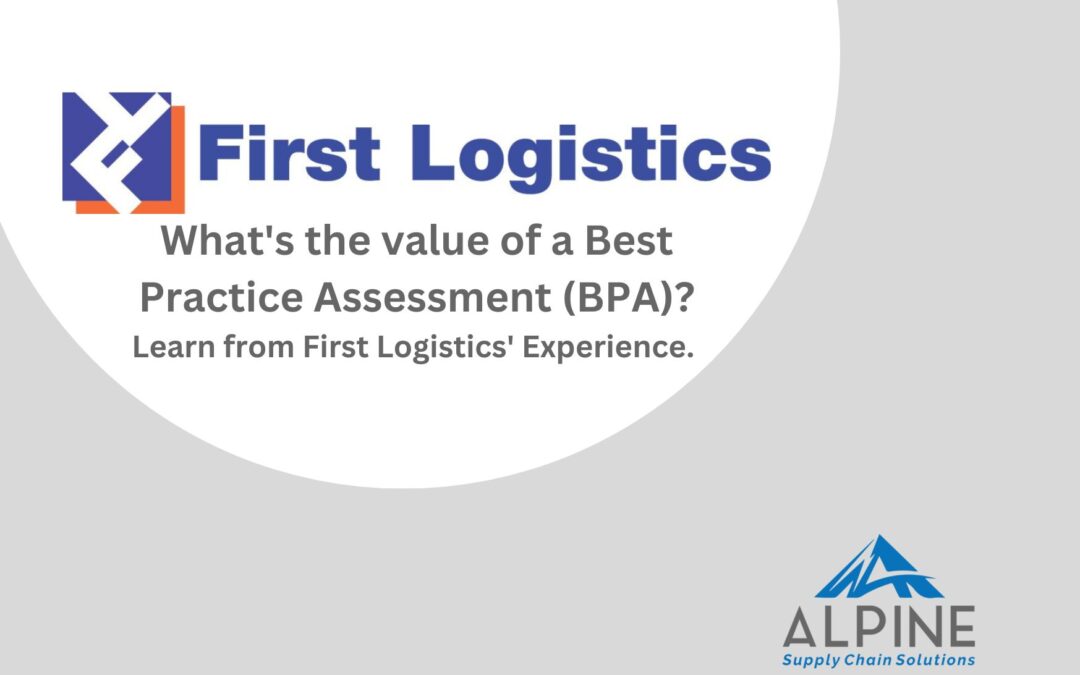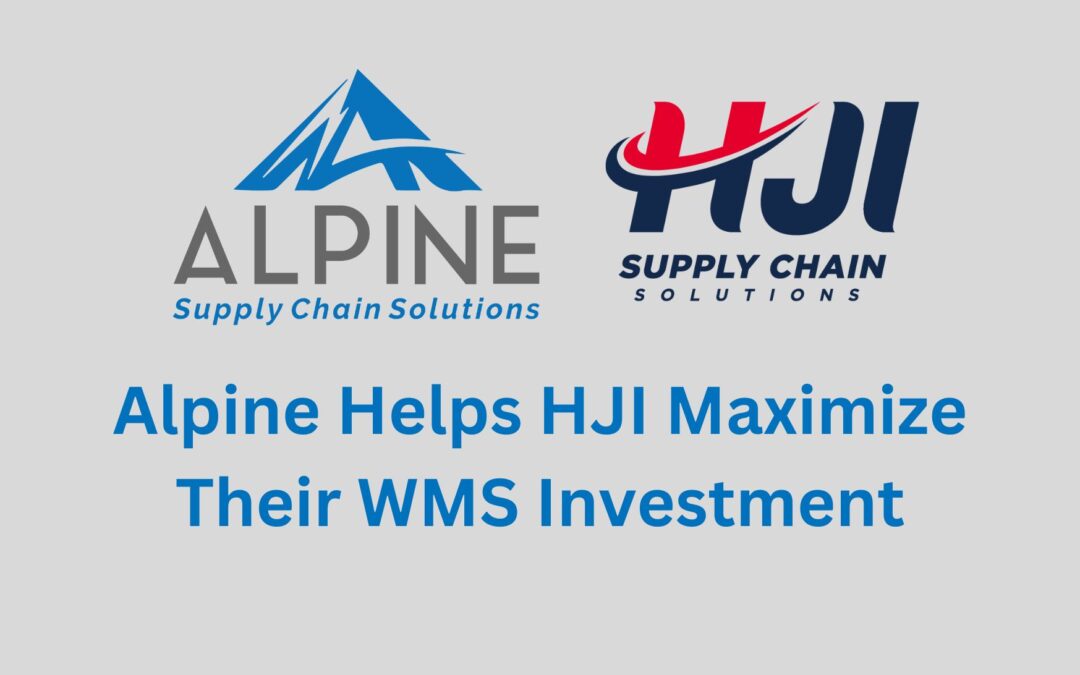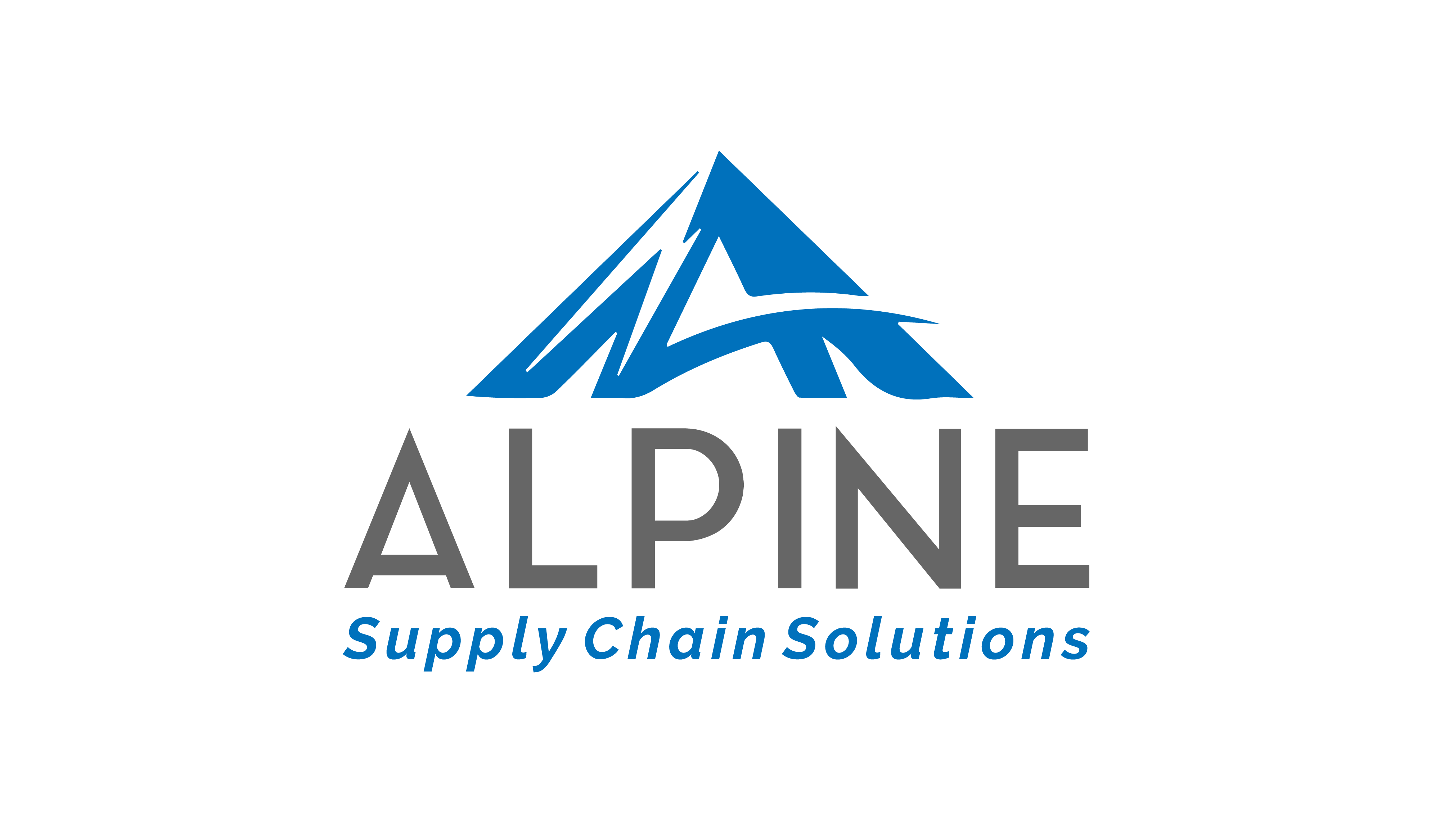
by Noelle Abarelli | Dec 21, 2022 | Blog
When transportation and logistics leader First Logistics’ growth took off, so did their need for a more robust Warehouse Management System (WMS). Their homegrown Inventory Control System wasn’t built to handle their increasing order volumes and system limitations were hampering associate productivity and impeding a sustainable Flow-of-Goods operating model. Plus, the homegrown system was dependent on outsourced partners, which introduced a high level of risk. First Logistics wanted to ensure they invested in the right WMS for their business, so the supply chain leadership team decided to embark on Best Practice Assessment (BPA) to gain a better understanding of their requirements and build a solid case to cost to justify their investment. They engaged Alpine Supply Chain Solutions to lead the exercise.
According to Alpine’s Managing Principal, Michael Wohlwend, “A BPA is a great exercise to help organizations uncover opportunities for improvement while benchmarking their operations against competitive, best-in-class operations. They take just a few weeks and are a great fit for companies seeking to identify supply chain improvements, define requirements, estimate costs, and quantify ROI.”
How does a Best Practice Assessment work?
A BPA will vary by client and objective, but a standard engagement ensures that all business processes and areas of operation are fully reviewed and assessed. By diving deep into the details, a BPA can uncover capital and non-capital improvements across all operational areas including inventory, space, equipment, labor, and systems.
A standard engagement is a four-week process and will look as follows:
Week 1: Data Collection
Our data-driven methodology leverages a deep dive into metrics in every area of your operations including procurement and receiving; putaway; restocking and replenishment; order processing and selection; shipping, staging, loading, VAS; and more.
Week 2: Data Validation
We validate initial data findings during an onsite visit and cross-reference our findings against Best Practice metrics from market leaders such as WERC, ROFDA, and ISO.
Week 3: Qualification
We share initial findings to prioritize the initiatives that streamline business processes to increase operational performance, improve customer service, and reduce cost.
Week 4: Final Results
We create and deliver a plan of actionable improvement recommendations and associated ROI.
What’s the value of a Best Practice Assessment?
The value of a BPA varies by the initial objective of the exercise. For First Logistics, a BPA enabled the supply chain leadership team to confidently respond when Executive Leadership questioned what a WMS would cost, how long an implementation would take, and when they could expect to see benefits. The project was approved as was the cost to add additional resources to implement the WMS as the team was able to clearly identify what resources were available and where there were gaps.
Why the time is right for a Best Practice Assessment
Over the past few years, supply chain leaders have faced more complex, changing conditions than ever before. Enterprises of all shapes and sizes are seeking to shake up their supply chain strategies to become more resilient, collaborative, and networked with customers, suppliers, and other stakeholders. A BPA offers a great method for understanding which supply chain Best Practices will significantly improve product quality, customer service levels, market share, and return on assets, and as a result, your company’s overall performance. Reach out if you’re interested in learning more.

by Noelle Abarelli | Sep 14, 2022 | Blog, Warehouse Management System
If there’s one thing we know for certain it’s that when we make a considerable investment in technology, we want to see that investment pay off. We want to know that our time, effort, money, and resources were not wasted. So, when HJI Supply Chain Solutions implemented the Körber WMS, they expected to maximize space, improve efficiencies and increase productivity across their entire business. Unfortunately, without a dedicated resource to grow and support application use, the Körber implementation stalled and failed to yield the desired results. In fact, HJI had an underutilized WMS and was considering starting all over again with an entirely new WMS system.
Before completely scrapping what had already been done, HJI reached out to Alpine for insight. As Körber WMS experts, Alpine had the skills to determine a solution for HJI to get back on track. Alpine re-engaged with Körber and led the execution of client-side responsibilities, giving HJI the time to focus on running their operations without interruption. Alpine took on:
- Developing a full acceptance test plan to assist with the execution and documentation of the user acceptance testing process.
- Documenting work instructions and standard operating procedures.
- Serving as the communication conduit between Körber WMS, ERP providers, and the HJI team.
And much more! In the end, The implementation was a success and, in the process, HJI was able to broaden and deepen its solution knowledge base. HJI has since successfully rolled the Körber solution out to a larger facility in Louisville and two additional facilities in Memphis. They are securely under Körber’s support wing and are now working to fully link all clients and all warehouses on the application.
This August, Alpine Supply Chain Solutions was named to this year’s SupplyChainBrain list of 100 Great Supply Chain Partners. As part of their coverage, SupplyChainBrain documented the entire project between HJI and Alpine, you can view that article here.
And, If you’re struggling with a WMS implementation, don’t give up! Engage with experts who can provide a second opinion to ensure you’re not missing out on opportunities to make use of the investment you’ve made. If you’d like help with your project, don’t hesitate to give us a ring.

by Noelle Abarelli | Jul 21, 2022 | Alpine News Blog, Blog
You’ve been given the monumental task of finding a new WMS, and you need it fast, but where do you begin? The first thing to do is slow down! WMS selection is not a process you can rush, it requires research, planning, and a whole lot of thought. Finding the right WMS means finding a system with the functionality you need, from a vendor you can trust, who aligns with your company and can deliver against your goals.
In an effort to gain an understanding of best practices when it comes to finding the right WMS, we collaborated with our partner Made4net and several other industry experts to compile a set of best practices to help you find the right WMS. The resulting framework includes five steps:
STEP #1: CREATE AN INTERNAL RESOURCE PLAN
Step #1 is all about securing a commitment to the endeavor. To do so, you’ll need to create an internal resource plan and get commitment from the entire business that your WMS project will be staffed accordingly.
STEP #2: BUILD A BUSINESS CASE
Step #2 involves building a Business Case for the WMS project that enables you to establish key metrics for measuring results, a budget, and the cost/benefit ratio of the project.
STEP #3: DEFINE SPECIFIC REQUIREMENTS
In Step #3, you’ll create an RFX that outlines and matches both your short and long-term goals. This means defining all functional requirements, including all traditional WMS functions from inside the warehouse, plus activities related to yard management, dock scheduling, labor reporting, different picking activities, shipment processing activities, etc.
STEP #4: FIND VENDORS
During Step #4, you’ll conduct general research on 5-8 vendors. You’ll examine functionality, costs, and services to get a high-level idea of fit. From there, you’ll be able to narrow down a short list of vendors to engage with.
STEP #5: DIVE INTO THE SELECTION PROCESS
A new WMS involves a long-term partnership with a software vendor. In Step 5, you’ll step through a series of activities including site visits, demonstrations, customer visits, and more to be sure you choose the vendor that fits you to a tee.
Finding the right WMS takes careful planning, research, and strong leadership throughout the process. If you’re interested in learning more about best practices to help you find the right WMS, download a copy of: Ask the Experts: Tips to Getting the WMS Selection Right.
Implementing a new WMS is probably something you will only do once in your career, and it’s a massive undertaking. While you know the ins and outs of your operation like the back of your hand, selecting and implementing a new WMS may be a task you need outside help with. If that’s the case, feel free to reach out to Team Alpine. We have 100+ WMS implementations under our belt, and we’d be happy to share what we’ve learned with you!

by Alpine Supply Chain | Apr 3, 2020 | Distribution Network Services
The process of finding, selecting, and implementing the correct WMS software for your company is an important process that can quickly spiral past its allotted timeline, costing your company. Learn how to avoid these delays to better your company.
In his Supply Chain Quarterly article “Ready, Set — Delay,” Alpine’s Greg Utter addresses these issues. He states, “How do you make sure that your project takes off running and can avoid being trapped in a system of ‘ready, set, delay?’ After years of implementing countless systems, we have some advice on how to make the process flow smoother.”
Also, download our free white paper to walk through the steps:
- Determining what type of warehouse solution you need
- Creating an RFP
- Assessing, comparing and selecting the right vendor
- Negotiating contracts
- Making a solid plan for implementation.
Click below for Greg’s WMS wisdom.
About Greg:
Greg is a seasoned Supply Chain Technology and Operations Professional focused on driving revenue through value engineering (ROI Analysis), and business development. He has spent his entire career as an innovative leader in Supply Chain Sales, Consulting and Implementation.
Greg possesses over 30 years of progressive hands-on experience with a broad range of mission-critical supply chain technologies including on-premise, cloud-based, and SaaS solutions. He has deep domain expertise across a variety of solutions sets including supply chain execution, supply chain planning, labor management solutions, and supply chain advanced analytics. Greg has extensive experience evaluating, selling and implementing advanced technologies related to big data, predictive analytics, and artificial intelligence.
Greg is considered an expert in roles related to “C – Level” strategic sales, business growth and expansion, value engineering and business case development. He has leadership experience in Pre-Sales Consulting, Account Executive mentoring, product strategy, training/mentoring and management consulting.
Greg spent the first 10 years of his Supply Chain career at Fleming Foods, a $40B Grocery Wholesaler, and he was responsible for rolling out WMS and Labor solutions to over 30 Distribution Centers within the Fleming network. Greg then transitioned to Dallas Systems/EXE Technologies where, for almost 10 years, he served in various Supply Chain leadership roles. Prior to joining Alpine, Greg spent 15 years at Manhattan Associates, the leading global provider of Supply Chain Software and Services. While at Manhattan, Greg had a proven track record of providing clear, timely and focused solutions to a variety of Fortune 500 Companies in all key vertical markets.
Along with his work, Greg enjoys working with WERC, Supply Chain Management Group (SCM) and CSCMP. He contributes to supply chain publications with the most recent article “READY, SET – DELAY!” in the Q1/2020 edition of CSCMP’s Supply Chain magazine. Greg also serves in various capacities with several non-profit organizations including Feeding America, Native Americans in Business, Habitat for Humanity and The American Red Cross.

by Alpine Supply Chain | Dec 11, 2019 | Warehouse Management
Business Intelligence is all the rage these days, and Alpine now offers a WMS Advanced Reporting solution that can give you data for days, including:
-Key Performance Indicator (KPI) analysis
-Financial performance tracking
-On-time and In-Full performance
-Function-specific cycle times
To determine if your operation could benefit from an advanced reporting solution, reflecton these questions:
- Do I rely on base GUI screens for business insights into my WMS?
- Do I have to export data from my WMS into Excel and run macros and pivot tables in order to get the information I need?
- Are my supervisors spending unnecessary time after every shift calculating UPH metrics or other necessary KPIs?
- Can I quickly provide my team with easy-to-read visuals that quickly show how effectively each team member is performing?
- Are there parts of your operation that fall into the “black box” category, leaving you guessing why the WMS is behaving in a given manner?
If you answered any of the above questions with a less-than-favorable response, it maybe time to step up your business intelligence (BI) game!
If you want more in-depth, actionable data from your JDA, see our white paper, “Operational Efficiencies Realized Through Business Intelligence” to learn how need-based reporting can breathe life into a stagnant WMS.






